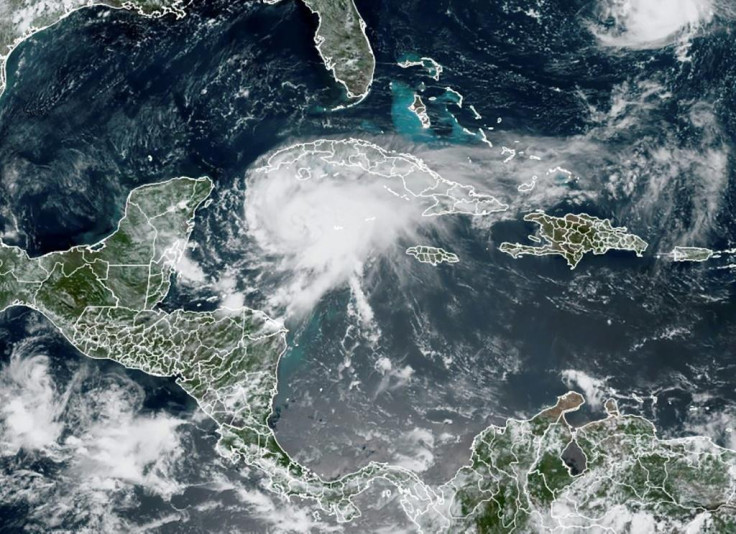Brace for Impact: 2025 Hurricane Season Set to Be Fiercer Than Usual, Warn Forecasters
Experts predict a busier hurricane season ahead—here's how to prepare and stay safe

Weather experts at the National Oceanic and Atmospheric Administration (NOAA) recently released a report predicting an above-average Atlantic hurricane season in 2025.
According to NOAA, the 2025 storm season could have 13-19 storm names, beginning on 1 June and lasting until 30 November.
Forecasters at the centre also predict that six to 10 of all 13-19 storms could be hurricanes, and three to five of those could be major hurricanes of Category 3 (111 mph/178 km/h) or higher.
Ken Graham, Director of NOAA's National Weather Service, told reporters on Thursday that there is a 60 per cent chance of an above-average storm season.
With a strong chance of an extreme hurricane season, many lives, homes, and properties are at stake. As such, residents of hurricane-prone areas must prepare early and stay informed to prevent loss of life. Below are some of the key factors shaping this year's storm forecast.
Factors Impacting This Year's Storm Forecast
The recent El Niño and its counterpart, La Niña, are observed to have faded, giving way to neutral conditions in the Pacific. But rather than calming things down, this shift appears to have stirred up new storm systems just as the Atlantic approaches the height of its hurricane season.
Weather forecasters are closely watching developing storm activity, as neutral ENSO (El Niño–Southern Oscillation) phases can open the door to a wide range of outcomes. Without the usual suppressing or amplifying effects of El Niño or La Niña, other climate factors—like warmer-than-usual Atlantic waters and shifting wind patterns—are now driving the forecast. Early indicators suggest a potentially active period ahead, just as the season begins to ramp up.
How El Niño and La Niña Weather Patterns Work
El Niño and La Niña weather patterns are crucial for storm predictions, especially during hurricane season. El Niño and La Niña are essential climate patterns that significantly influence weather worldwide and are vital for storm predictions, especially during hurricane season.
El Niño vs La Niña
When El Niño conditions dominate, the Atlantic tends to see fewer hurricanes due to stronger wind shear that disrupts storm development. Conversely, La Niña usually brings a more active hurricane season, as calmer upper winds create a friendlier environment for storms to form.
So, rather than leading to average activity, these patterns often signal below-average or above-average hurricane seasons, depending on which one is in effect.
Neutral El Niño and La Niña Conditions
When El Niño and La Niña are neutral, predicting storm activity becomes trickier. With no strong signal from the Pacific, other factors—like Atlantic sea temperatures and wind patterns—take the lead. As a result, hurricane seasons during neutral years can be quieter, average, or more active.
It's a wait-and-see situation, with no clear guidance from the usual global patterns.
How to Prepare for the 2025 Hurricane Season
Stay Informed
- Follow trusted sources like the Met Office, National Hurricane Centre (NHC), or your local weather service.
- Sign up for emergency alerts and weather apps that provide real-time storm tracking.
Know Your Risk
- If you live near the coast or in a flood-risk area, check if you're in an evacuation zone.
- A hurricane watch means a storm is possible, while a warning means it's likely and could arrive soon.
Create an Emergency Kit
Have a ready-to-grab kit with:
- Bottled water (enough for 3–5 days)
- Non-perishable food
- Torch and batteries
- First-aid supplies
- Essential documents (ID, insurance) in a waterproof pouch
- Mobile phone charger or power bank
Secure Your Home
- Trim trees and secure loose outdoor items.
- Check your roof, windows, and doors for weak spots.
- Install storm shutters if you live in high-risk areas.
- Know how to turn off utilities like gas and electricity if needed.
Plan Ahead
- Know your evacuation routes. Arrange a meeting point and contacts for family members.
- If you have pets, include them in your plan and pack essentials for them too.
Review Insurance
- Make sure your home and flood insurance are up to date.
- Take photos of your property and valuables for reference.
The best time to prepare is before storms are on the radar. Supplies may run out fast once warnings are issued. You can access NOAA's hurricane preparedness information for further guidance.
© Copyright IBTimes 2025. All rights reserved.





















